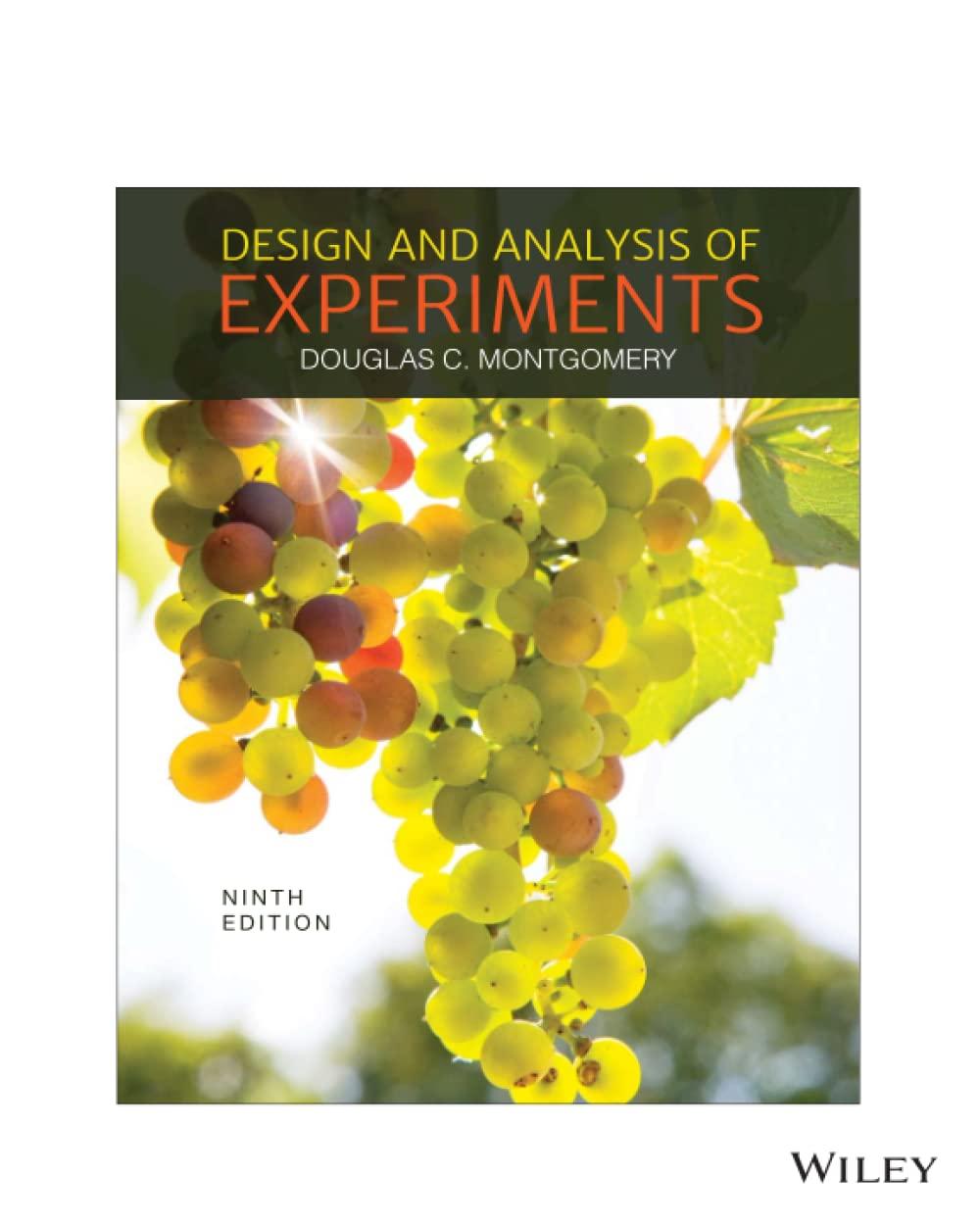The yield of a chemical process was measured using five batches of raw material, five acid concentrations,
Question:
The yield of a chemical process was measured using five batches of raw material, five acid concentrations, five standing times (A, B, C, D, E), and five catalyst concentrations
(????, ????, ????, ????, ????). The Graeco-Latin square that follows was used.
Analyze the data from this experiment (use ???? = 0.05) and draw conclusions.
Acid Concentration Batch 1 2 3 1 A???? = 26 B???? = 16 C???? = 19 2 B???? = 18 C???? = 21 D???? = 18 3 C???? = 20 D???? = 12 E???? = 16 4 D???? = 15 E???? = 15 A???? = 22 5 E???? = 10 A???? = 24 B???? = 17 Acid Concentration Batch 4 5 1 D???? = 16 E???? = 13 2 E???? = 11 A???? = 21 3 A???? = 25 B???? = 13 4 B???? = 14 C???? = 17 5 C???? = 17 D???? = 14 4.41 Suppose that in Problem 4.28 the engineer suspects that the workplaces used by the four operators may represent an additional source of variation. A fourth factor, workplace
(????, ????, ????, ????) may be introduced and another experiment conducted, yielding the Graeco-Latin square that follows.
Analyze the data from this experiment (use ???? = 0.05) and draw conclusions.
Order of Operator Assembly 1 2 3 4 1 C???? = 11 B???? = 10 D???? = 14 A???? = 8 2 B???? = 8 C???? = 12 A???? = 10 D???? = 12 3 A???? = 9 D???? = 11 B???? = 7 C???? = 15 4 D???? = 9 A???? = 8 C???? = 18 B???? = 6 4.42 Construct a 5 × 5 hypersquare for studying the effects of five factors. Exhibit the analysis of variance table for this design.
Step by Step Answer:






